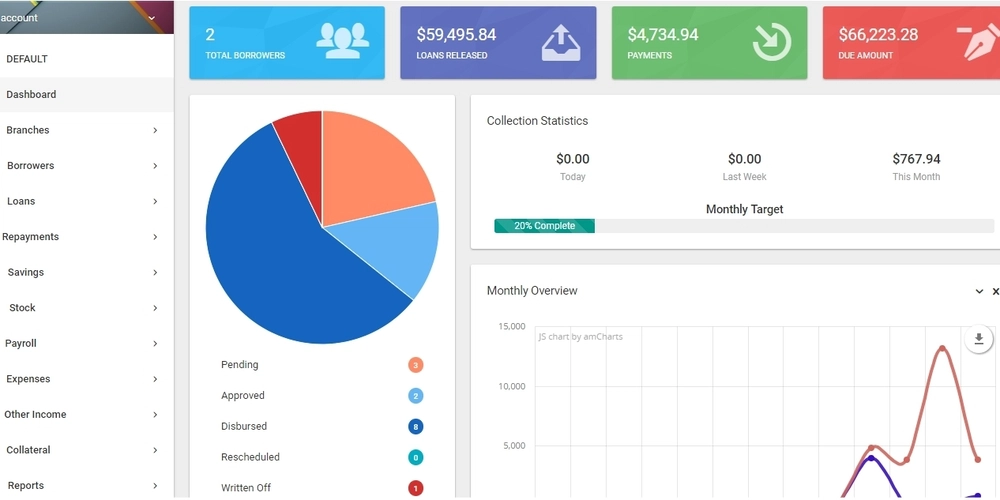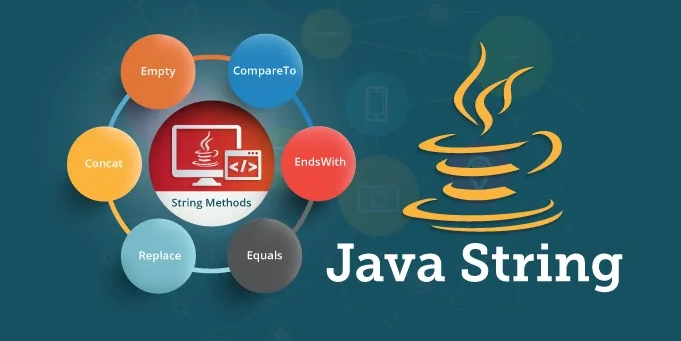The Impact of Edge Computing on Real-Time Data
Why Speedy Data Is Changing the World Imagine you’re playing an online game, and every jump or turn happens instantly, with no annoying lag. Or think about a self-driving car that stops in a split second to avoid danger. These amazing things are possible because of edge computing. It’s like having a super-smart computer right next to you, making decisions faster than you can blink. Edge computing processes data close to where it’s created, cutting down delays and powering everything from your phone to entire smart cities. In this blog, we’ll dive deep into what edge computing is, why it’s a game-changer for real-time data, and how it’s making our world faster, safer, and more exciting. With clear explanations, fun examples, and practical tips, you’ll see why edge computing is the future. Let’s explore this lightning-fast world together! What Is Edge Computing and How Does It Work? Edge computing is all about processing data near where it’s created, instead of sending it far away to a big computer called a cloud server. Think of it like cooking dinner in your kitchen instead of ordering takeout from a restaurant miles away—it’s faster and fresher! When you use your phone, watch a live video, or drive a smart car, data is created. Normally, this data travels to a distant server to be processed, which takes time. Edge computing uses small, powerful devices (like mini-computers) near you to handle that data instantly. For example, when you talk to a smart speaker like Alexa, edge computing helps it understand your voice right away. These “edge devices” can be anything from a small box in a factory to a chip in your car. By keeping data close, edge computing reduces latency (the time it takes for data to travel), saves energy, and makes things work smoothly. It’s like having a brain on the spot, making quick decisions without waiting. This speed is why edge computing is perfect for real-time data, where every second counts. Why Real-Time Data Matters Real-time data is information that’s processed and used right now. Think about a weather app that tells you it’s raining before you step outside, or a fitness tracker that shows your heart rate during a run. Real-time data is super important because it lets us act fast. Without it, doctors couldn’t monitor patients during surgery, and traffic lights couldn’t adjust to prevent jams. Edge computing makes real-time data even better by speeding things up. For instance, in a hospital, edge devices can analyze a patient’s heart monitor data instantly, alerting doctors if something’s wrong. This is way faster than sending data to a cloud server, which could take seconds or minutes—too long in an emergency. Real-time data also powers fun stuff, like live sports apps that update scores the moment a goal is scored. By cutting delays, edge computing ensures we get accurate, up-to-the-second information. It’s like having a superpower that lets you know what’s happening right now, helping you make smart choices on the spot. Edge Computing in Everyday Life Edge computing is already all around us, making our daily lives better in ways we might not even notice. Take your smartphone, for example. When you use a map app to find the fastest route, edge computing processes traffic data nearby, so you get updates instantly. This helps you avoid getting stuck in a jam. Or think about streaming a movie on Netflix. Edge servers store popular shows close to you, so your video loads fast and doesn’t buffer. Another cool example is smart home devices. Your video doorbell uses edge computing to detect motion and send you an alert right away, keeping your home safe. Even in stores, edge computing helps cash registers process payments quickly, so you don’t wait in line forever. These examples show how edge computing makes things faster and more reliable. It’s like having a helpful robot assistant working behind the scenes, ensuring everything runs smoothly. By bringing data processing closer, edge computing saves time and makes our gadgets smarter, improving how we live every day. Edge Computing in Smart Cities Smart cities are like something out of a sci-fi movie, and edge computing is the star of the show. These cities use technology to make life better for everyone, from reducing traffic to saving energy. Edge computing helps by processing data from thousands of sensors—think traffic cameras, air quality monitors, or streetlights—right where the data is collected. For instance, in a smart city, edge devices can analyze traffic camera data to adjust traffic lights in real time, preventing gridlock. Last week, I chatted with some app designers in London who were tweaking a traffic app to use edge computing. They explained how their app pulls data from local edge servers to give drivers instant updates on road conditions, helping them avoid delays. This kind of speed is critical in busy cities. Edge computing also helps save ener

Why Speedy Data Is Changing the World
Imagine you’re playing an online game, and every jump or turn happens instantly, with no annoying lag. Or think about a self-driving car that stops in a split second to avoid danger. These amazing things are possible because of edge computing. It’s like having a super-smart computer right next to you, making decisions faster than you can blink. Edge computing processes data close to where it’s created, cutting down delays and powering everything from your phone to entire smart cities. In this blog, we’ll dive deep into what edge computing is, why it’s a game-changer for real-time data, and how it’s making our world faster, safer, and more exciting. With clear explanations, fun examples, and practical tips, you’ll see why edge computing is the future. Let’s explore this lightning-fast world together!
What Is Edge Computing and How Does It Work?
Edge computing is all about processing data near where it’s created, instead of sending it far away to a big computer called a cloud server. Think of it like cooking dinner in your kitchen instead of ordering takeout from a restaurant miles away—it’s faster and fresher! When you use your phone, watch a live video, or drive a smart car, data is created. Normally, this data travels to a distant server to be processed, which takes time. Edge computing uses small, powerful devices (like mini-computers) near you to handle that data instantly.
For example, when you talk to a smart speaker like Alexa, edge computing helps it understand your voice right away. These “edge devices” can be anything from a small box in a factory to a chip in your car. By keeping data close, edge computing reduces latency (the time it takes for data to travel), saves energy, and makes things work smoothly. It’s like having a brain on the spot, making quick decisions without waiting. This speed is why edge computing is perfect for real-time data, where every second counts.
Why Real-Time Data Matters
Real-time data is information that’s processed and used right now. Think about a weather app that tells you it’s raining before you step outside, or a fitness tracker that shows your heart rate during a run. Real-time data is super important because it lets us act fast. Without it, doctors couldn’t monitor patients during surgery, and traffic lights couldn’t adjust to prevent jams.
Edge computing makes real-time data even better by speeding things up. For instance, in a hospital, edge devices can analyze a patient’s heart monitor data instantly, alerting doctors if something’s wrong. This is way faster than sending data to a cloud server, which could take seconds or minutes—too long in an emergency. Real-time data also powers fun stuff, like live sports apps that update scores the moment a goal is scored. By cutting delays, edge computing ensures we get accurate, up-to-the-second information. It’s like having a superpower that lets you know what’s happening right now, helping you make smart choices on the spot.
Edge Computing in Everyday Life
Edge computing is already all around us, making our daily lives better in ways we might not even notice. Take your smartphone, for example. When you use a map app to find the fastest route, edge computing processes traffic data nearby, so you get updates instantly. This helps you avoid getting stuck in a jam. Or think about streaming a movie on Netflix. Edge servers store popular shows close to you, so your video loads fast and doesn’t buffer.
Another cool example is smart home devices. Your video doorbell uses edge computing to detect motion and send you an alert right away, keeping your home safe. Even in stores, edge computing helps cash registers process payments quickly, so you don’t wait in line forever. These examples show how edge computing makes things faster and more reliable. It’s like having a helpful robot assistant working behind the scenes, ensuring everything runs smoothly. By bringing data processing closer, edge computing saves time and makes our gadgets smarter, improving how we live every day.
Edge Computing in Smart Cities
Smart cities are like something out of a sci-fi movie, and edge computing is the star of the show. These cities use technology to make life better for everyone, from reducing traffic to saving energy. Edge computing helps by processing data from thousands of sensors—think traffic cameras, air quality monitors, or streetlights—right where the data is collected.
For instance, in a smart city, edge devices can analyze traffic camera data to adjust traffic lights in real time, preventing gridlock. Last week, I chatted with some app designers in London who were tweaking a traffic app to use edge computing. They explained how their app pulls data from local edge servers to give drivers instant updates on road conditions, helping them avoid delays. This kind of speed is critical in busy cities. Edge computing also helps save energy by controlling streetlights, turning them on only when needed. By making cities smarter and more efficient, edge computing creates cleaner, safer, and less stressful places to live. It’s like giving a city its own brain to solve problems on the fly!
Edge Computing in Healthcare
In healthcare, every second can save a life, and edge computing is making a huge difference. Hospitals use real-time data to monitor patients, like tracking heart rates or oxygen levels during surgery. Edge computing processes this data instantly, right in the hospital, so doctors get alerts the moment something’s wrong. This is way faster than sending data to a distant server, which could cause dangerous delays.
For example, wearable devices like smartwatches use edge computing to analyze your heart rate or sleep patterns on the spot, giving you instant health tips. In remote areas, edge devices in mobile clinics can process medical tests without needing a strong internet connection, helping doctors treat patients faster. Edge computing also keeps patient data private by processing it locally, reducing the risk of hacks. It’s like having a super-smart nurse who’s always watching and ready to help. By speeding up data processing and improving security, edge computing is transforming healthcare, making it faster, safer, and more accessible for everyone.
Edge Computing in Autonomous Vehicles
Self-driving cars are one of the coolest uses of edge computing. These cars need to make split-second decisions—like stopping for a pedestrian or avoiding a pothole. Edge computing makes this possible by processing data from the car’s cameras, sensors, and radar right on board. If the car had to send all that data to a cloud server, it would take too long, and accidents could happen.
For example, a self-driving car might detect a cyclist in its path. Edge computing analyzes the sensor data instantly, telling the car to slow down or stop. This happens in milliseconds, keeping everyone safe. Edge computing also helps cars communicate with each other, like warning nearby vehicles about a sudden traffic jam. This teamwork makes roads safer and less congested. By processing data locally, edge computing gives autonomous vehicles the speed and smarts they need to drive like expert humans (or even better!). It’s like giving cars super-fast reflexes, making our roads safer and more efficient.
Edge Computing in Industry and Manufacturing
Factories and industries are getting a major upgrade thanks to edge computing. In a factory, machines create tons of data, like temperature readings or production speeds. Edge computing processes this data right on the factory floor, helping managers spot problems instantly. For example, if a machine is overheating, an edge device can detect it and shut it down before it breaks, saving money and time.
Edge computing also powers “smart factories” where robots work together. These robots use edge devices to share data in real time, coordinating tasks like assembling a car. This makes production faster and reduces mistakes. Plus, edge computing cuts down on internet costs since less data needs to be sent to the cloud. It’s like having a super-efficient foreman who keeps everything running smoothly. By making factories smarter and more responsive, edge computing boosts productivity and helps businesses stay competitive. It’s a win for workers, companies, and customers who get better products faster.
Challenges of Edge Computing
While edge computing is amazing, it’s not perfect. One big challenge is managing all the edge devices. Imagine thousands of mini-computers spread across a city—keeping them updated and secure is a huge task. If one device fails or gets hacked, it could cause problems, like giving wrong traffic data or slowing down a factory.
Another issue is power. Edge devices need electricity, and in remote places (like a wind farm in the desert), that’s hard to provide. Plus, edge computing can be expensive to set up because you need lots of devices and software. There’s also the challenge of making sure all these devices work together smoothly, like a big orchestra playing in sync. Despite these hurdles, companies are finding solutions, like using solar power for devices or creating better security systems. Understanding these challenges helps us appreciate how hard people are working to make edge computing even better. It’s like solving a tricky puzzle to unlock a faster, smarter future.
The Future of Edge Computing
The future of edge computing is super exciting! As technology gets better, edge devices will become smaller, faster, and cheaper, so more people can use them. For example, tiny edge chips could be added to everyday objects, like your fridge, to make them smarter. Your fridge could warn you when food is about to spoil, using real-time data processed right there.
Edge computing will also team up with 5G networks, which are super-fast internet connections. This combo will make things like virtual reality games or remote surgeries even smoother. In the future, entire cities could run on edge computing, with every streetlight, bus, and building working together to save energy and keep people safe. Scientists are even exploring edge computing for space missions, where data needs to be processed on a spacecraft far from Earth. It’s like giving the world—and even the universe—a high-speed brain. The possibilities are endless, and edge computing is set to make our lives faster, smarter, and more connected than ever.
How to Get Started with Edge Computing
Want to use edge computing in your life or business? It’s easier than you think! First, start small. If you run a store, try a smart camera that uses edge computing to count customers or spot shoplifters in real time. For personal use, get a smart home device like a thermostat that processes data locally to save energy.
Next, learn about edge computing tools. Companies like Amazon and Google offer edge services, like AWS IoT Greengrass, that let you set up edge devices. You don’t need to be a tech genius—many tools come with simple guides. If you’re a business, hire experts to install edge devices and train your team. Also, focus on security. Make sure your edge devices have strong passwords and regular updates to stay safe from hackers. Finally, experiment! Try edge computing for small projects, like monitoring a garden’s soil moisture, and scale up as you learn. It’s like planting a seed and watching it grow into something amazing. With a little effort, you can use edge computing to make your life or business faster and smarter.
Embracing the Power of Edge Computing
Edge computing is like a superhero for real-time data, making our world faster, safer, and smarter. From self-driving cars to smart cities, it’s changing how we live by processing data right where it’s created. We’ve explored how it powers smartphones, hospitals, factories, and more, all while keeping things quick and reliable. Sure, there are challenges, like managing devices or keeping them secure, but the future is bright with endless possibilities. Whether you’re a student, a business owner, or just curious, edge computing is something to get excited about. It’s not just tech—it’s a tool to solve problems and make life better. So, dive in, learn more, and maybe even try it out yourself. The world of edge computing is waiting, ready to help you move at the speed of now!









































































































































































![[The AI Show Episode 144]: ChatGPT’s New Memory, Shopify CEO’s Leaked “AI First” Memo, Google Cloud Next Releases, o3 and o4-mini Coming Soon & Llama 4’s Rocky Launch](https://www.marketingaiinstitute.com/hubfs/ep%20144%20cover.png)




























































































































![[DEALS] The All-in-One Microsoft Office Pro 2019 for Windows: Lifetime License + Windows 11 Pro Bundle (89% off) & Other Deals Up To 98% Off](https://www.javacodegeeks.com/wp-content/uploads/2012/12/jcg-logo.jpg)



























![Is this too much for a modular monolith system? [closed]](https://i.sstatic.net/pYL1nsfg.png)






















































































































_Andreas_Prott_Alamy.jpg?width=1280&auto=webp&quality=80&disable=upscale#)
































































































![What features do you get with Gemini Advanced? [April 2025]](https://i0.wp.com/9to5google.com/wp-content/uploads/sites/4/2024/02/gemini-advanced-cover.jpg?resize=1200%2C628&quality=82&strip=all&ssl=1)













![Apple Shares Official Trailer for 'Long Way Home' Starring Ewan McGregor and Charley Boorman [Video]](https://www.iclarified.com/images/news/97069/97069/97069-640.jpg)
![Apple Watch Series 10 Back On Sale for $299! [Lowest Price Ever]](https://www.iclarified.com/images/news/96657/96657/96657-640.jpg)
![EU Postpones Apple App Store Fines Amid Tariff Negotiations [Report]](https://www.iclarified.com/images/news/97068/97068/97068-640.jpg)
![Apple Slips to Fifth in China's Smartphone Market with 9% Decline [Report]](https://www.iclarified.com/images/news/97065/97065/97065-640.jpg)




































































































































